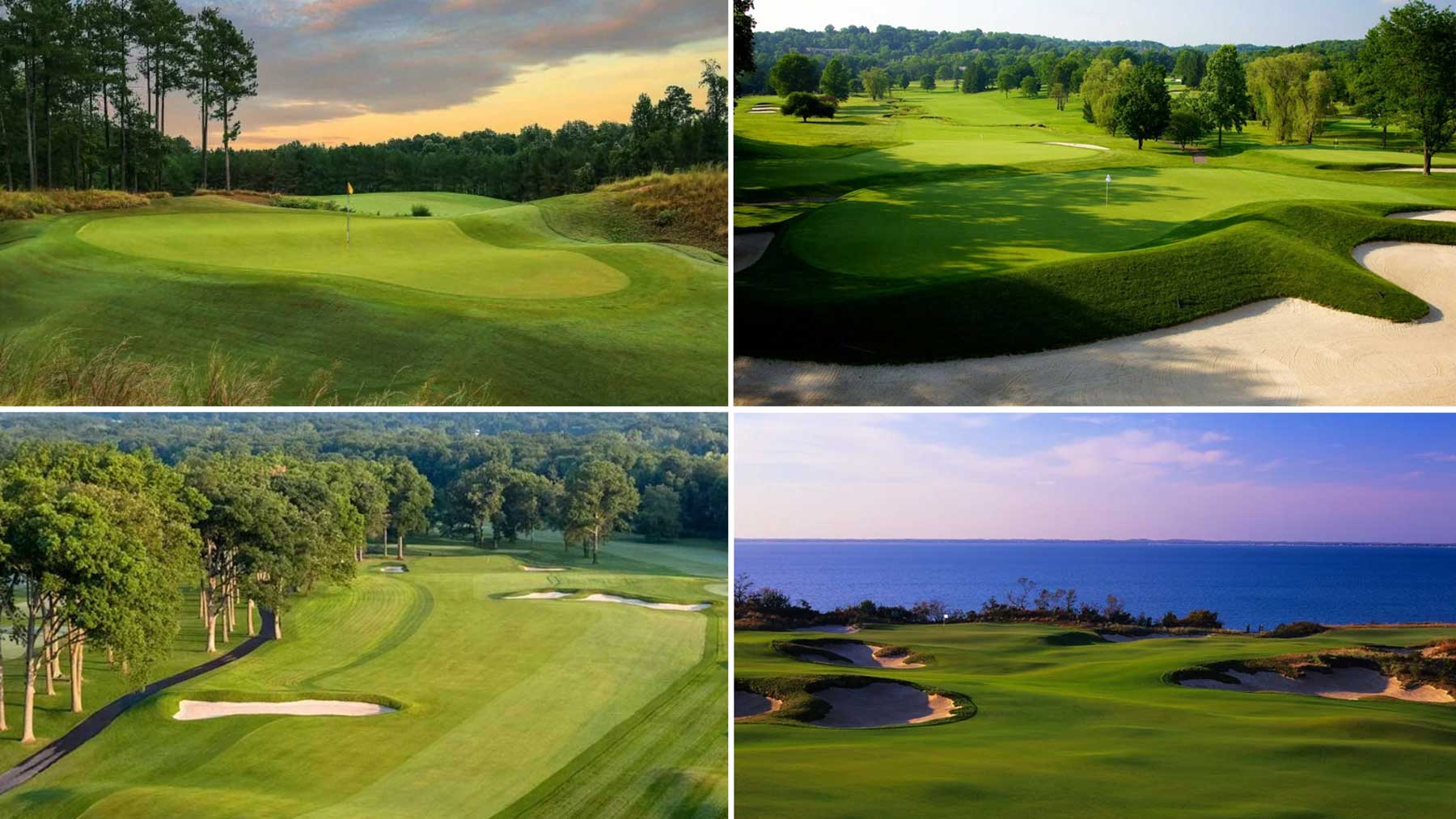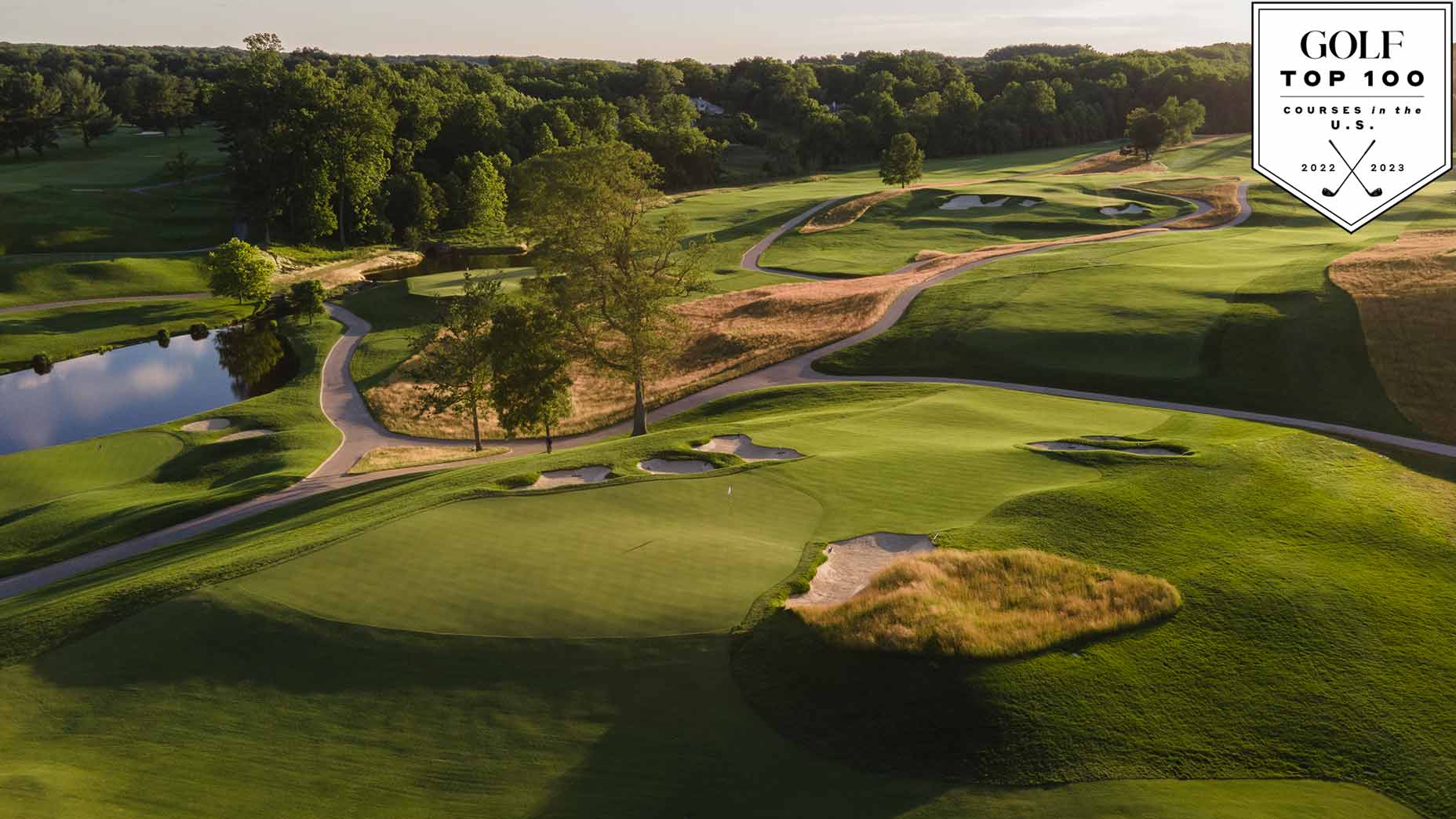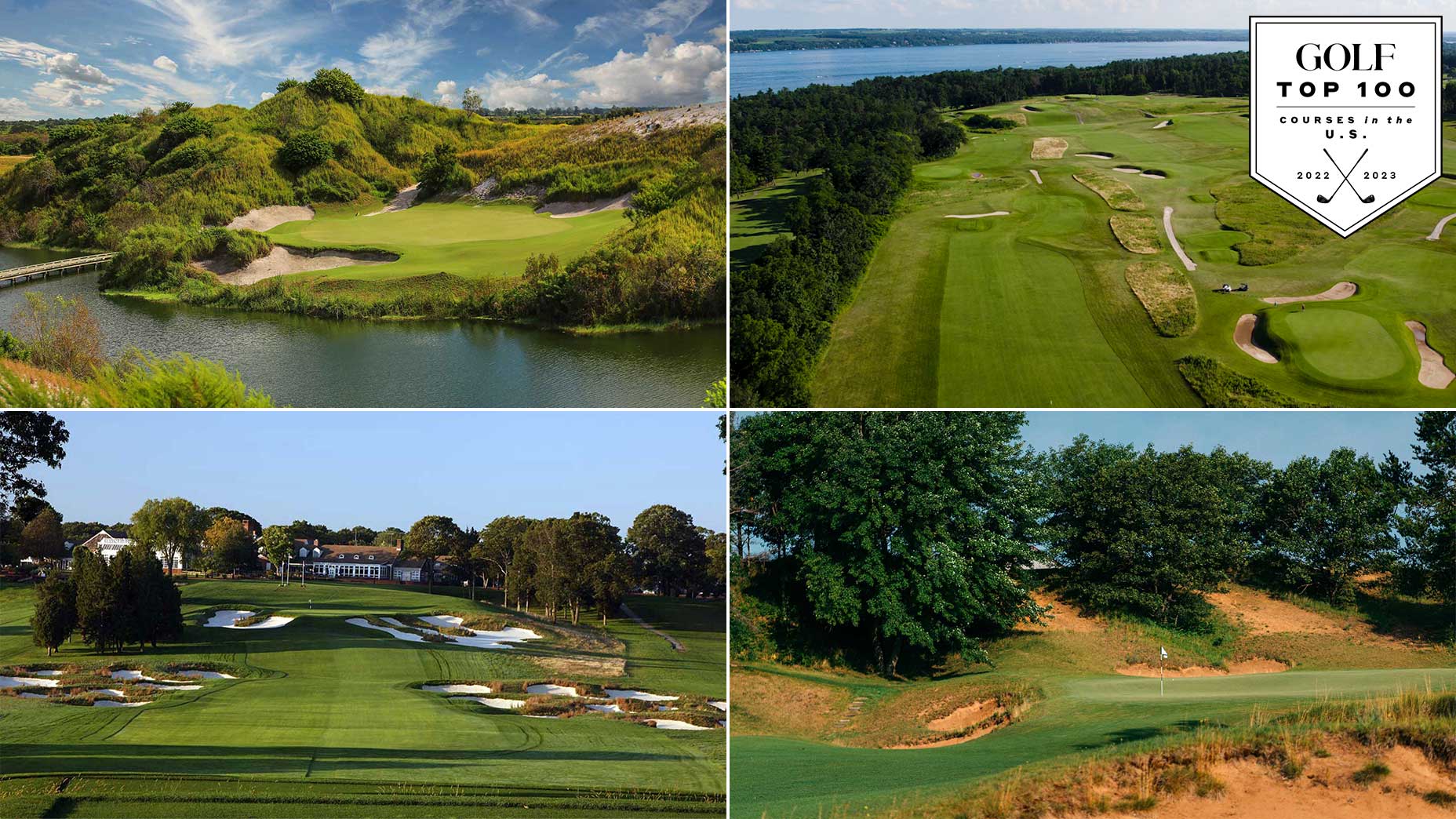Small-town wonders can pack a big Top 100 Courses punch

A view of the Dunes Course at The Prairie Club in Valentine, Neb.
Brian Oar Photography
GOLF released its latest Top 100 Courses in the U.S. ranking. You can check it out here, and you can subscribe to GOLF Magazine here.
Search Valentine, Neb., on Google. Population: maybe 3,000. Here, livestock outnumber humans. Yet within a 30-minute drive, this sandy plain offers the public-access Prairie Club, featuring two fine 18-holers (the Dunes course is ranked No. 94), and the private CapRock Ranch, which makes its debut at No. 59, having just opened in 2021. CapRock epitomizes the burgeoning trend of playing in wonderful inland locations. Here, it’s akin to teeing it up in a national park. Eight of CapRock’s greens sit along or border the Snake River valley, and only the screech of an eagle will disrupt you from soaking up the grandeur of the place.
Small-town wonders don’t stop in Nebraska. Other courses built since Sand Hills near sub-5,000-person towns include Ohoopee Match Clubin Cobb town, Ga. (No. 39), Gamble Sands outside Brewster, Wash. (No. 82) and Congaree near Ridgeland, S.C. (No. 85). And let’s not forget Bandon Dunes. To say that Mike Keiser, the resort’s mastermind, took the “bouncing” ball and ran with it would be an understatement. Bandon Dunes (No. 46) opened in 1999, Pacific Dunes (No. 17) in 2001, Bandon Trails (No. 40) in 2005, Old Macdonald (No. 77) in 2010 and Sheep Ranch (No. 97) in 2020. That’s five courses in Oregon on our Top 100 today that didn’t even exist in 1995. Talk about good news for the rec golfer: In 1995, 13 of the Top 100 were open to the public. Now, it’s 21.
We’d be remiss not to mention other visionaries in the Keiser mold who have put their stamp on golf in America: Herb Kohler (who passed away at age 83 as we were tabulating the ballots) and Johnny Morris. Back in the ’80s, in Kohler, Wis. (pop: 2,500), Kohler reestablished the notion of pairing great accommodations with excellent golf. Morris, founder of Bass Pro Shops, shaped his love of the wilderness as a place to gather and spend time with family to create Big Cedar Lodge outside Hollister, Mo. (pop: 5,000). The resort is exceptional and an exclamation point to the notion that golf in America’s midsection has never been stronger.
Check out GOLF’s newest Top 100 Courses in the U.S. ranking | Methodology: How we rate courses | Meet our expert panelists
The pioneering Dick Youngscap, Keiser, Kohler and Morris took chances, no mistake. Asking golfers to travel to remote areas is fraught with peril — if you get it wrong, people won’t show and you’re done. Kudos to their belief that compelling golf — no matter its locale — is what we want.
It’s a matter of enjoyment. When you visit Sand Hills, for example, the last thing on your mind is how many fairways or greens you hit. The worth of the course — any elite course — isn’t joined to a number. Rather, it’s tethered to the enjoyment derived by playing it. Indeed, when you unburden yourself from reducing the game to statistics and start thinking more holistically, golf at its highest form becomes a spiritual awakening. That’s true — and lasting — power. What a novel concept! Unfortunately, it’s one that course developers strayed from during the second half of the last century. Today’s reassertion of width, quirk, short grass and wild greens widens the sport’s appeal. Golf in America is back on track.










